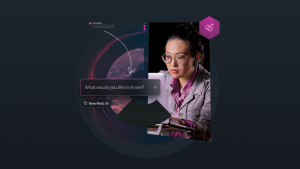Technology changes fast, and that’s doubly true when your business is adding observability to technology. That’s why we make the Nerdlog. Follow us on Twitch and tune in every Thursday at noon PT (8 p.m. UTC) to learn about the latest New Relic observability features from the product managers and engineers who built them. You can get step-by-step tutorials, give feedback, and ask questions live. If you missed last week’s Nerdlog episode 3, check out the recap below.
Finding anomalies with New Relic AIOps
Throughout the day, lots of New Relic users put up anomaly detection to keep a general eye on the state of their system overall. In a quick demo, Devin shows how our anomalies feed can help give you a great overview of what’s happening within your system. You can slice and dice your anomalies by category, app name, time, configuration (groups of apps that you’ve configured to be monitored by Proactive Detection), and state. These capabilities are super powerful.
By default, the detected anomalies are available within the New Relic interface. You can also send notifications to many integrations. For example, users like to send notifications to a private Slack channel to preview how anomaly detection would notify their teams as they configure the tool.
Using AI to find correlated failures
Managing alerts remains a challenge for teams as they grow. Nate Heinrich has been working for the last few months to improve the Incident Intelligence system within Applied Intelligence, an AIOps-assisted tool for showing how your alerts connect.
Correlation is a fancy term for “things happening around the same time.” With these tools, you can use automation to find correlations, and configure correlations based on your services’ attributes. This capability makes it easy to see things like “show me patterns from our services that are part of the infrastructure team” or “show me data that covers enterprise customers.”
The correlation preview shows how multiple events would be correlated in future incidents. Toward the end of the segment, Nate ponders the future of AIOps: no system will get to full automation and diagnose every problem. But in the future, tools like Applied Intelligence will use their broad scope of data to give better and better clues, test hypotheses automatically, and make things easier for humans.
Smart alert muting on New Relic
It’s funny to get excited about muting, but Brian Goleno, a product manager in our Applied Intelligence group, makes a clear case for it: “Very often, teams have planned maintenance, or regular long-running jobs, that they know will trigger alerts that shouldn’t wake anyone up,” says Brian.
Muting lets you set criteria, including a time window, for muting alerts and notifications. You can filter by tags or other attributes, finding only those violations that shouldn’t trigger alerts.
Alerting doesn’t mean disabling monitoring: while this tool will stamp incidents with muted = true, they’ll still be visible in Applied Intelligence. This is helpful if an engineer is wondering why the service is down during maintenance: she can still see the Applied Intelligence notification, without getting paged for downtime during maintenance.
Watch to see Brian go deep on giving your on-call engineers peace and quiet.
Custom data visualizations
Jewels Nocera, senior software engineer and fashion icon, shares how you can build custom New Relic One visualizations with our programmability tools.
Starting with customizing dashboard charts, she shows how to add and remove attributes, scale charts, and otherwise tweak pre-made visualizations to make dashboards more readable.
I’ve written before that your time to resolution is directly related to how easy it is to read your dashboard. The ability to carefully scale, scope, and control custom dashboards can improve by those critical minutes.
In the second half of the segment, Jewels shows how our new feature for custom visualizations lets you fully customize the way your data is displayed. With a local development environment, you can build complete visualizations using your real New Relic data.
Even better, you can create a configuration for your custom visualization. Other users within your team don’t have to update your code, but can use visual configuration toggles just like they do with custom dashboards.
Subscribe to our Nerdlog emails to get weekly updates about the latest features and releases from the people who built them. Join the Nerdlog discussion live every Thursday at 12 p.m. PT (8 p.m. UTC) on Twitch or follow along in What’s New.
If you're not a New Relic customer, sign up for your free account today to try out log mangement
As opiniões expressas neste blog são de responsabilidade do autor e não refletem necessariamente as opiniões da New Relic. Todas as soluções oferecidas pelo autor são específicas do ambiente e não fazem parte das soluções comerciais ou do suporte oferecido pela New Relic. Junte-se a nós exclusivamente no Explorers Hub ( discuss.newrelic.com ) para perguntas e suporte relacionados a esta postagem do blog. Este blog pode conter links para conteúdo de sites de terceiros. Ao fornecer esses links, a New Relic não adota, garante, aprova ou endossa as informações, visualizações ou produtos disponíveis em tais sites.



